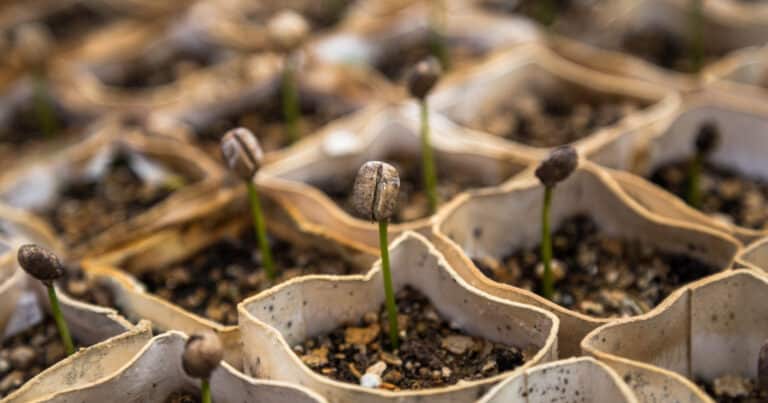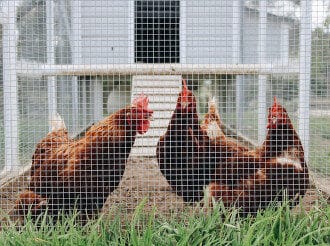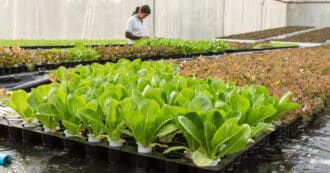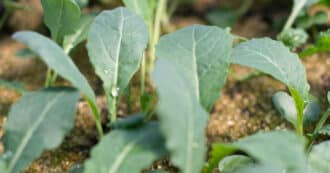By Ethel Mendius – Industrial agriculture is the mainstay of the modern food system. With its global prevalence and far-reaching consequences, it is necessary we evaluate industrial agriculture for its impact on the environment and human health. Following this, we can advocate for policy changes and new solutions that strive toward feeding the world sustainably.
The Rise of Industrial Agriculture
The transition from hunting and gathering to farming, or the Neolithic Revolution, occurred in ancient times. Since then, innovations in agriculture have been pivotal to the growth of human societies, changing how human beings eat and live.
The British Agricultural Revolution
In the 17th century, the British Agriculture Revolution brought tools and techniques that led to a population boom: “the increased availability of food allowed for populations across the world to grow” and join the urban workforce. As technologies have advanced, this trend has persisted.
The Green Revolution
The Green Revolution, beginning in the 1940s, was a contributing factor to modern industrial agriculture. Led by American agricultural scientist Norman Borlaug, this era ushered in its own array of technological reform to industrial farming and increased the yield of food production for the growing global population. This new approach included genetic engineering and drip irrigation, but its most lasting and controversial impacts come from the use of chemical pesticides and synthetic fertilizers used to aid growth.
Features of Industrial agriculture
In the U.S., industrialized faming has altered the fabric of society. John Hopkins reports that “in the early 1900s, more than half of Americans were either farmers or lived in rural communities”, and these farmers produced a variety of animals and crops. Throughout the course of the century, all of this changed.
Food production became a specialized process, as farms began devoting themselves to a single animal species or crop (often corn, wheat, or soy). As farmers specialized, the mechanical techniques they used continued to improve, leading to a dramatic decline in the agricultural workforce by the end of the 20th century, from 41 to 2 percent, and an overhaul of the American food system.
New chemical technology changed the face of industrialized farming. In addition to the chemical fertilizers and pesticides produced by the Green Revolution, agriculturalists made greater use of genetically modified organisms as well as antibiotics to artificially bolster the health and size of farm animals.
Big Farms
The economic impacts of industrial agriculture have been as vast as the technological changes that made them possible. While small to mid-sized farms were the norm before industrial agriculture, the scale allowed by new farming methods made it harder for small farms to survive.
The government embraced this change with policy that paved the way for industrial farms; U.S. Secretary of Agriculture Ezra Taft Benson called on those in the industry to “get big or get out.” Getting big meant the scale of production must increase to feed the rising population and contribute to an increasingly complex global food system.
Today’s Industrial Farms
Industrial farming looks little like the small farms of yore. Instead of being raised with access to the outdoors, farm animals are reared in concentrated animal feeding operations (CAFOs) designed to accelerate meat production. These facilities raise alarm bells for proponents of animal welfare.
On the other hand, much of the produce grown on industrial farms have become commodity crops, used not as food but for animal feed or biofuel. Because of these changes, the productivity of industrial farming has not had a straightforward impact on food security, and has come with severe health and environmental drawbacks.
Too Big to Fail?
Industrial agriculture has brought the potential of food production to unimaginable heights, and research suggests that “our current agricultural production could feed 10 to 14 billion people if it was used exclusively and as efficiently as possible as food.” However, with food insecurity still a sad reality, the efficiency of industrialized farming is called into question.
The Benefits of Industrial Agriculture
Advocates for industrial agriculture point towards its ability to keep Americans fed while living and working away from the realm of agriculture, contributing to the prosperity of a developed society. The yield of American agriculture has a vast surplus, “making the country the world’s largest agricultural exporter” and demonstrating how industrial agriculture can help feed the world’s burgeoning population.
Even proponents of industrial agriculture see room for improvement, namely vertical integration. The structure of the industry today means that many farm operations do not own or care for the land they operate on, leading to management practices that harm the long term environmental health of these farmlands and do damage to neighboring and downstream economies.
The Hidden Cost of Industrial Agriculture
As the United Nations Environmental Programme (UNEP) has found, “decades of industrial farming have taken a heavy toll on the environment” in addition to having adverse effects on human health and even the economy. While the latter point may be surprising, UNEP takes into account the knock-on effects of these practices.
For instance, chemical fertilization and animal waste can lead to water pollution that needs cleaning, consequently burdening taxpayers. Antibiotics “commonly used to accelerate livestock growth” pose a public health risk by allowing for the growth of antibiotic resistant bacteria that defy modern medicine.
Also, the prevalence of certain commodity crops used in food processing has lead to poor nutrition in the U.S. even as food is readily available. Worse yet, the current supply chain leaves those in developing countries dependent on our system, and our aid if that system fails.
Environmental Health Perspectives
Industrial agriculture has taken a toll on the environment. Because monoculture, “the planting of a single crop on large tracts of land”, is the standard practice, we have seen the loss of biodiversity and increased soil erosion in farms. Factory farming, particularly CAFOs, “produce massive amounts of methane, nitrous oxide, and ammonia which accelerate climate change.”
Sustainable Agriculture
With these drawbacks, we must turn toward methods of sustainable agriculture. However, it can be hard to imagine a different system when the current one is so entrenched in the farming industry. Facing this challenge requires innovative solutions.
However, these solutions can also be drawn from existing human wisdom. From the Ground Up: Rethinking Industrial Agriculture is one book that elucidates traditional systems which “often closely mimic the productivity, stability and sustainability of the surrounding ecosystem.” Before industrial agriculture, people developed farming practices that paid heed to local resources and natural habitats instead of manipulating them for short-term benefit.
Such practices have been incorporated into the modern approach of regenerative agriculture. This movement “focuses on improving and revitalizing soil health” and restoring lost biodiversity while urging the agricultural industry to fight climate change.
Religion and Industrial Agriculture
Numbers 13:22–23 – They went up into the Negeb and came to Hebron, where lived Ahiman, Sheshai, and Talmai, the Anakites. – Now Hebron was founded seven years before Zoan of Egypt. – They reached the wadi Eshcol, and there they cut down a branch with a single cluster of grapes – it had to be borne on a carrying frame by two of them – and some pomegranates and figs.
Grapes, Figs, and Pomegranates, Eco Bible Volume 2
Rabbi Moshe ben Nachman (Nachmanides; Ramban) suggests that despite Hebron being built many generations earlier, it continued to yield huge fruits. Hence, much greater yields should have been expected from newly plowed fields, such as those in Zoan!
In the words of Rabbi Daniel Kohn (contemporary), the Rabbis relate that Abraham recognized the Land he had been sent to when he saw people “weeding when the land needed weeding, hoeing when the land needed hoeing.” He said, “Let my place be here!” and God said, “I have given it to your children.” What he saw was people who were responsive to their land, acting in its rhythms, respectfully. This relates deeply to agricultural sustainability – the ability to farm the land in a way that the land continues to produce for many, many years, and was its advantage over the younger, but less fruitful Zoan.
Unsustainable agricultural practices contributed to salinity buildup in Mesopotamia and the decline of Mesopotamian civilizations and continue to impact agriculture in Syria and Iraq. Western industrial agriculture produces big fruits now, but its long-term sustainability is very much in question.
Rabbi Yaakov Tzvi Mecklenburg (HaKetav VeHaKabbalah; 18th–19th century) writes, “Our rabbis taught us the glory of the Land of Israel from this, because the soil in the Hebron region is comparably thin, weak and dry and unfit for cultivating human food, and therefore it is generally used for growing animal feed. And yet, its fruits were far better than those grown in the land of Zoan (of Egypt) that was famed for the quality of its fruits.”
Zoan, identified as the ancient Egyptian city of Tanis, sits on the Nile delta and would have had excessive irrigation from the flooding of the river. However, in the words of a contemporary wine expert, “Over-irrigation can have serious adverse effects on grape quality, which is equally important to yield for premium wine grape production.”
A report about agriculture states: “The vast majority of vineyards in Hebron are rain fed and not irrigated. Grapes are considered the most important crop in the Hebron district as they form the main source of income for a large number of farmers. They are amongst the oldest cultivated fruits in the district as demonstrated by the presence of ancient stone grape presses.” More than 50 percent of the grape production in Hebron is the ancient Dabouki (meaning “sweetness” in Arabic) variety, characterized by “green-yellow colored fruits, high degree of sweetness, early ripening, soft-medium flesh firmness, well developed seeds, drought resistance, and successful cultivation under a wide variety of soil types.” Sometimes, the ancient agricultural techniques and crops, which have been tried and tested over many generations, are the most fit for agricultural success and sustainability of the land.
* Featured image source









The best approach to averting a climate catastrophe is through, along with other positive changes like shifts to renewable forms of energy, a societal shift to plant-based diets. This is the only change that will not only sharply reduce greenhouse gas emissions through less cows and other farmed animals emitting methane, a very potent greenhouse gas. It would also enable much of the over a third of the ice-free land area that is currently being used for grazing and growing feed crops for animals to be reforested, resulting in much of the current atmospheric CO2 to be sequestered and stored in trees. This could reduce the current dangerous atmospheric CO2 of 420 parts per million to a safer value below 350 ppm, a threshold value for safety, according to climate experts.
Because climate threats are so great, I will happily email PDFs of the complete text and the cover picture of my latest book, VEGAN REVOLUTION: SAVING OUR WORLD, REVITALIZING JUDAISM, to anyone who emails me at VeggieRich@gmail.com, and puts “Please send PDFs” in the subject line.
It is essential that this year be a turning point in efforts to avert a climate catastrophe. Every day we delay makes averting the catastrophe more difficult, as self-reinforcing positive feedback loops move the planet closer to an irreversible tipping point.